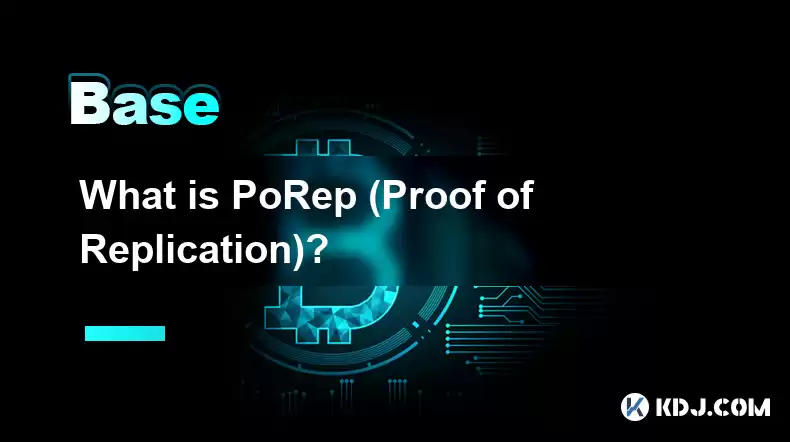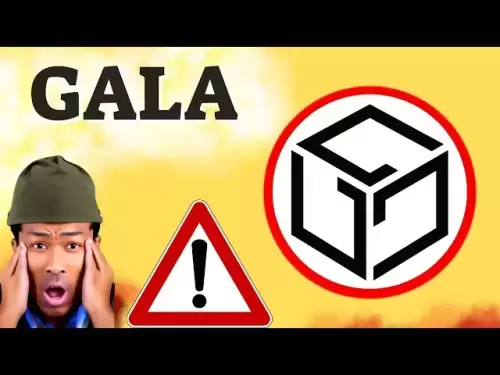-
 Bitcoin
Bitcoin $118000
0.67% -
 Ethereum
Ethereum $3750
0.71% -
 XRP
XRP $3.183
1.61% -
 Tether USDt
Tether USDt $1.000
-0.01% -
 BNB
BNB $788.1
1.21% -
 Solana
Solana $186.0
0.85% -
 USDC
USDC $0.9999
-0.02% -
 Dogecoin
Dogecoin $0.2373
1.25% -
 TRON
TRON $0.3204
1.76% -
 Cardano
Cardano $0.8266
1.85% -
 Hyperliquid
Hyperliquid $44.04
1.28% -
 Sui
Sui $4.192
5.88% -
 Stellar
Stellar $0.4399
2.63% -
 Chainlink
Chainlink $18.40
1.19% -
 Hedera
Hedera $0.2842
9.06% -
 Bitcoin Cash
Bitcoin Cash $560.5
2.46% -
 Avalanche
Avalanche $24.99
4.58% -
 Litecoin
Litecoin $114.5
1.25% -
 UNUS SED LEO
UNUS SED LEO $8.980
-0.03% -
 Shiba Inu
Shiba Inu $0.00001406
0.53% -
 Toncoin
Toncoin $3.306
4.27% -
 Ethena USDe
Ethena USDe $1.001
0.03% -
 Polkadot
Polkadot $4.169
2.37% -
 Uniswap
Uniswap $10.56
1.95% -
 Monero
Monero $322.8
1.06% -
 Dai
Dai $0.0000
0.00% -
 Bitget Token
Bitget Token $4.545
0.12% -
 Pepe
Pepe $0.00001261
1.29% -
 Aave
Aave $296.5
1.27% -
 Cronos
Cronos $0.1379
5.90%
What is PoRep (Proof of Replication)?
PoRep ensures data integrity and availability in decentralized storage by requiring nodes to prove they have replicated data, crucial for systems like Filecoin.
Apr 08, 2025 at 12:42 pm

What is PoRep (Proof of Replication)?
Proof of Replication (PoRep) is a consensus mechanism used in blockchain networks, particularly in decentralized storage systems like Filecoin. PoRep is designed to ensure that data is not only stored but also replicated across multiple nodes in the network. This mechanism is crucial for maintaining the integrity and availability of data in decentralized storage solutions. In this article, we will delve into the intricacies of PoRep, its importance, how it works, and its implementation in real-world applications.
h3>The Importance of PoRep
PoRep plays a vital role in ensuring the reliability and security of decentralized storage networks. By requiring nodes to prove that they have replicated data, PoRep helps prevent data loss and ensures that data remains accessible to users. This is particularly important in systems where data redundancy is necessary to maintain high levels of availability and fault tolerance. Without PoRep, nodes could claim to store data without actually doing so, leading to potential data loss and decreased trust in the network.
h3>How PoRep Works
PoRep operates by requiring nodes to provide cryptographic proofs that they have replicated the data they claim to store. This process involves several steps:
- Data Encoding: The data to be stored is encoded into a specific format that allows for efficient replication and verification.
- Replication: The encoded data is then replicated across multiple nodes in the network.
- Proof Generation: Each node generates a cryptographic proof that demonstrates it has replicated the data correctly.
- Verification: Other nodes in the network can verify these proofs to ensure that the data has been replicated as claimed.
This process ensures that nodes cannot simply claim to store data without actually doing so, as they must provide verifiable evidence of replication.
h3>Technical Details of PoRep
PoRep relies on advanced cryptographic techniques to ensure the integrity of the replication process. One of the key components is the use of Zero-Knowledge Proofs (ZKPs), which allow nodes to prove that they have replicated data without revealing the actual data itself. This is crucial for maintaining the privacy and security of the stored information.
Another important aspect of PoRep is the use of Merkle Trees, which are used to efficiently verify the integrity of large datasets. By organizing data into a Merkle Tree, nodes can quickly generate and verify proofs of replication, even for very large datasets.
h3>Implementation of PoRep in Filecoin
Filecoin is one of the most prominent blockchain projects that utilizes PoRep. In Filecoin, miners are required to provide PoRep proofs to demonstrate that they have stored and replicated data as promised. This is a critical part of the Filecoin network, as it ensures that data is reliably stored and accessible to users.
To implement PoRep in Filecoin, miners follow a detailed process:
- Setup: Miners set up their storage systems and prepare to store data.
- Data Storage: Miners store the data they receive from clients.
- Replication: Miners replicate the stored data across their storage systems.
- Proof Generation: Miners generate PoRep proofs to demonstrate that they have replicated the data correctly.
- Submission: Miners submit these proofs to the Filecoin network for verification.
- Verification: Other nodes in the network verify the PoRep proofs to ensure that the data has been replicated as claimed.
This process ensures that miners are incentivized to store and replicate data honestly, as they are rewarded for providing valid PoRep proofs.
h3>Challenges and Considerations
While PoRep is a powerful mechanism for ensuring data replication, it also comes with certain challenges and considerations. One of the main challenges is the computational overhead required to generate and verify PoRep proofs. This can be resource-intensive, especially for large datasets.
Another consideration is the potential for false positives or false negatives in the verification process. If a node generates an invalid proof, it could be mistakenly accepted as valid, or vice versa. To mitigate these risks, the Filecoin network uses multiple layers of verification and consensus mechanisms to ensure the accuracy of PoRep proofs.
Additionally, the implementation of PoRep requires careful consideration of the trade-offs between security, efficiency, and scalability. Balancing these factors is crucial for the successful deployment of PoRep in decentralized storage systems.
h3>Benefits of PoRep
PoRep offers several key benefits for decentralized storage networks:
- Data Integrity: By requiring nodes to prove that they have replicated data, PoRep helps ensure the integrity of stored information.
- Availability: PoRep ensures that data remains accessible to users, even in the event of node failures or network disruptions.
- Security: The use of cryptographic proofs and zero-knowledge proofs enhances the security of the stored data.
- Incentivization: PoRep incentivizes nodes to store and replicate data honestly, as they are rewarded for providing valid proofs.
These benefits make PoRep an essential component of decentralized storage solutions like Filecoin.
Frequently Asked Questions
Q: How does PoRep differ from Proof of Space (PoSpace)?
A: While both PoRep and PoSpace are used in decentralized storage systems, they serve different purposes. PoRep focuses on proving that data has been replicated across multiple nodes, ensuring data redundancy and availability. In contrast, PoSpace is used to prove that a node has allocated a certain amount of storage space, without necessarily proving that the space is being used to store specific data.
Q: Can PoRep be used in other blockchain applications beyond storage?
A: While PoRep is primarily designed for decentralized storage systems, its underlying principles could potentially be adapted for other blockchain applications that require data replication and verification. However, the specific implementation would need to be tailored to the unique requirements of each application.
Q: What happens if a node fails to provide a valid PoRep proof?
A: If a node fails to provide a valid PoRep proof, it may face penalties within the network, such as loss of rewards or even exclusion from the network. This incentivizes nodes to store and replicate data honestly and accurately.
Q: How does PoRep contribute to the overall security of a blockchain network?
A: PoRep enhances the security of a blockchain network by ensuring that data is replicated across multiple nodes, reducing the risk of data loss and increasing the resilience of the network. Additionally, the use of cryptographic proofs and zero-knowledge proofs adds an extra layer of security, making it difficult for malicious actors to manipulate or falsify data.
Disclaimer:info@kdj.com
The information provided is not trading advice. kdj.com does not assume any responsibility for any investments made based on the information provided in this article. Cryptocurrencies are highly volatile and it is highly recommended that you invest with caution after thorough research!
If you believe that the content used on this website infringes your copyright, please contact us immediately (info@kdj.com) and we will delete it promptly.
- Quantum Leap: How Bitcoin, Quantum Solutions, and $350M Are Shaking Up Corporate Finance
- 2025-07-27 14:30:12
- Arctic Pablo Coin: Your Icy Treasure Hunt for Mega Returns and Investment?
- 2025-07-27 15:10:12
- Meme Coins in 2025: Investment Strategies & Crypto Trends
- 2025-07-27 14:30:12
- Binance, BAYC/MAYC, and Staking: What's the Dealio?
- 2025-07-27 14:50:12
- Libra Token's Crypto Dynamics: An Exposé That Reshapes Perceptions
- 2025-07-27 14:50:12
- Doge, AI Tools, and Regulations: A Wild Ride in Crypto and Governance
- 2025-07-27 14:55:12
Related knowledge

What is the difference between CeFi and DeFi?
Jul 22,2025 at 12:28am
Understanding CeFi and DeFiIn the world of cryptocurrency, CeFi (Centralized Finance) and DeFi (Decentralized Finance) represent two distinct financia...

How to qualify for potential crypto airdrops?
Jul 23,2025 at 06:49am
Understanding What Crypto Airdrops AreCrypto airdrops refer to the distribution of free tokens or coins to a large number of wallet addresses, often u...

What is a crypto "airdrop farmer"?
Jul 24,2025 at 10:22pm
Understanding the Role of a Crypto 'Airdrop Farmer'A crypto 'airdrop farmer' refers to an individual who actively participates in cryptocurrency airdr...

What is the difference between a sidechain and a Layer 2?
Jul 20,2025 at 11:35pm
Understanding the Concept of SidechainsA sidechain is a separate blockchain that runs parallel to the main blockchain, typically the mainnet of a cryp...

What is the Inter-Blockchain Communication Protocol (IBC)?
Jul 19,2025 at 10:43am
Understanding the Inter-Blockchain Communication Protocol (IBC)The Inter-Blockchain Communication Protocol (IBC) is a cross-chain communication protoc...

How does sharding improve scalability?
Jul 20,2025 at 01:21am
Understanding Sharding in BlockchainSharding is a database partitioning technique that is increasingly being adopted in blockchain technology to enhan...

What is the difference between CeFi and DeFi?
Jul 22,2025 at 12:28am
Understanding CeFi and DeFiIn the world of cryptocurrency, CeFi (Centralized Finance) and DeFi (Decentralized Finance) represent two distinct financia...

How to qualify for potential crypto airdrops?
Jul 23,2025 at 06:49am
Understanding What Crypto Airdrops AreCrypto airdrops refer to the distribution of free tokens or coins to a large number of wallet addresses, often u...

What is a crypto "airdrop farmer"?
Jul 24,2025 at 10:22pm
Understanding the Role of a Crypto 'Airdrop Farmer'A crypto 'airdrop farmer' refers to an individual who actively participates in cryptocurrency airdr...

What is the difference between a sidechain and a Layer 2?
Jul 20,2025 at 11:35pm
Understanding the Concept of SidechainsA sidechain is a separate blockchain that runs parallel to the main blockchain, typically the mainnet of a cryp...

What is the Inter-Blockchain Communication Protocol (IBC)?
Jul 19,2025 at 10:43am
Understanding the Inter-Blockchain Communication Protocol (IBC)The Inter-Blockchain Communication Protocol (IBC) is a cross-chain communication protoc...

How does sharding improve scalability?
Jul 20,2025 at 01:21am
Understanding Sharding in BlockchainSharding is a database partitioning technique that is increasingly being adopted in blockchain technology to enhan...
See all articles

























































































